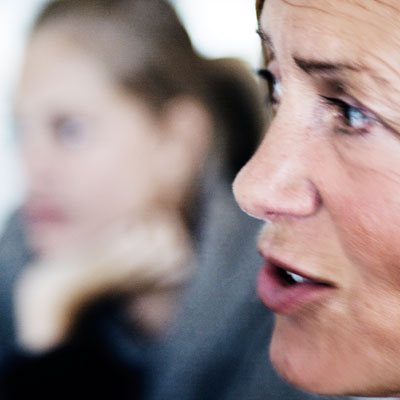MNT - Hourly Medical News Since 2003
MNT Knowledge Center
What Is Cancer? What Causes Cancer?
Cancer harms the body when damaged cells divide uncontrollably to form lumps or masses of tissue called tumors (except in the case of leukemia where cancer prohibits normal blood function by abnormal cell division in the blood stream). Tumors can grow and interfere with the digestive, nervous, and circulatory systems, and they can release hormones that alter body function. Tumors that stay in one spot and demonstrate limited growth are generally considered to be benign.
More dangerous, or malignant, tumors form when two things occur:
- a cancerous cell manages to move throughout the body using the blood or lymph systems, destroying healthy tissue in a process called invasion
- that cell manages to divide and grow, making new blood vessels to feed itself in a process called angiogenesis.

How cancer spreads - scientists reported in Nature Communications (October 2012 issue) that they have discovered an important clue as to why cancer cells spread. It has something to do with their adhesion (stickiness) properties.
Certain molecular interactions between cells and the scaffolding that holds them in place (extracellular matrix) cause them to become unstuck at the original tumor site, they become dislodged, move on and then reattach themselves at a new site.The researchers say this discovery is important because cancer mortality is mainly due to metastatic tumors, those that grow from cells that have traveled from their original site to another part of the body. Only 10% of cancer deaths are caused by the primary tumors.
The scientists, from the Massachusetts Institute of Technology, say that finding a way to stop cancer cells from sticking to new sites could interfere with metastatic disease, and halt the growth of secondary tumors.
In 2007, cancer claimed the lives of about 7.6 million people in the world. Physicians and researchers who specialize in the study, diagnosis, treatment, and prevention of cancer are called oncologists.
Malignant cells are more agile than non-malignant ones - scientists from the Physical Sciences-Oncology Centers, USA, reported in the journal Scientific Reports (April 2013 issue) that malignant cells are much “nimbler” than non-malignant ones. Malignant cells can pass more easily through smaller gaps, as well as applying a much greater force on their environment compared to other cells.
Professor Robert Austin and team created a new catalogue of the physical and chemical features of cancerous cells with over 100 scientists from 20 different centers across the United States.
The authors believe their catalogue will help oncologists detect cancerous cells in patients early on, thus preventing the spread of the disease to other parts of the body.
Prof. Austin said "By bringing together different types of experimental expertise to systematically compare metastatic and non-metastatic cells, we have advanced our knowledge of how metastasis occurs."
What causes cancer?
Cancer is ultimately the result of cells that uncontrollably grow and do not die. Normal cells in the body follow an orderly path of growth, division, and death. Programmed cell death is called apoptosis, and when this process breaks down, cancer begins to form. Unlike regular cells, cancer cells do not experience programmatic death and instead continue to grow and divide. This leads to a mass of abnormal cells that grows out of control.What is cancer? - Video
A short, 3D, animated introduction to cancer. This was originally created by BioDigital Systems and used in the Stand Up 2 Cancer telethon.Genes - the DNA type
Cells can experience uncontrolled growth if there are damages or mutations to DNA, and therefore, damage to the genes involved in cell division. Four key types of gene are responsible for the cell division process: oncogenes tell cells when to divide, tumor suppressor genes tell cells when not to divide, suicide genes control apoptosis and tell the cell to kill itself if something goes wrong, and DNA-repair genes instruct a cell to repair damaged DNA.Cancer occurs when a cell's gene mutations make the cell unable to correct DNA damage and unable to commit suicide. Similarly, cancer is a result of mutations that inhibit oncogene and tumor suppressor gene function, leading to uncontrollable cell growth.
Carcinogens
Carcinogens are a class of substances that are directly responsible for damaging DNA, promoting or aiding cancer. Tobacco, asbestos, arsenic, radiation such as gamma and x-rays, the sun, and compounds in car exhaust fumes are all examples of carcinogens. When our bodies are exposed to carcinogens, free radicals are formed that try to steal electrons from other molecules in the body. Theses free radicals damage cells and affect their ability to function normally.Genes - the family type
Cancer can be the result of a genetic predisposition that is inherited from family members. It is possible to be born with certain genetic mutations or a fault in a gene that makes one statistically more likely to develop cancer later in life.Other medical factors

As we age, there is an increase in the number of possible cancer-causing mutations in our DNA. This makes age an important risk factor for cancer. Several viruses have also been linked to cancer such as: human papillomavirus (a cause of cervical cancer), hepatitis B and C (causes of liver cancer), and Epstein-Barr virus (a cause of some childhood cancers). Human immunodeficiency virus (HIV) - and anything else that suppresses or weakens the immune system - inhibits the body's ability to fight infections and increases the chance of developing cancer.
What are the symptoms of cancer?
Cancer symptoms are quite varied and depend on where the cancer is located, where it has spread, and how big the tumor is. Some cancers can be felt or seen through the skin - a lump on the breast or testicle can be an indicator of cancer in those locations. Skin cancer (melanoma) is often noted by a change in a wart or mole on the skin. Some oral cancers present white patches inside the mouth or white spots on the tongue.Other cancers have symptoms that are less physically apparent. Some brain tumors tend to present symptoms early in the disease as they affect important cognitive functions. Pancreas cancers are usually too small to cause symptoms until they cause pain by pushing against nearby nerves or interfere with liver function to cause a yellowing of the skin and eyes called jaundice. Symptoms also can be created as a tumor grows and pushes against organs and blood vessels. For example, colon cancers lead to symptoms such as constipation, diarrhea, and changes in stool size. Bladder or prostate cancers cause changes in bladder function such as more frequent or infrequent urination.
As cancer cells use the body's energy and interfere with normal hormone function, it is possible to present symptoms such as fever, fatigue, excessive sweating, anemia, and unexplained weight loss. However, these symptoms are common in several other maladies as well. For example, coughing and hoarseness can point to lung or throat cancer as well as several other conditions.
When cancer spreads, or metastasizes, additional symptoms can present themselves in the newly affected area. Swollen or enlarged lymph nodes are common and likely to be present early. If cancer spreads to the brain, patients may experience vertigo, headaches, or seizures. Spreading to the lungs may cause coughing and shortness of breath. In addition, the liver may become enlarged and cause jaundice and bones can become painful, brittle, and break easily. Symptoms of metastasis ultimately depend on the location to which the cancer has spread.
How is cancer classified?
There are five broad groups that are used to classify cancer.- Carcinomas are characterized by cells that cover internal and external parts of the body such as lung, breast, and colon cancer.
- Sarcomas are characterized by cells that are located in bone, cartilage, fat, connective tissue, muscle, and other supportive tissues.
- Lymphomas are cancers that begin in the lymph nodes and immune system tissues.
- Leukemias are cancers that begin in the bone marrow and often accumulate in the bloodstream.
- Adenomas are cancers that arise in the thyroid, the pituitary gland, the adrenal gland, and other glandular tissues.
- Adeno- = gland
- Chondro- = cartilage
- Erythro- = red blood cell
- Hemangio- = blood vessels
- Hepato- = liver
- Lipo- = fat
- Lympho- = white blood cell
- Melano- = pigment cell
- Myelo- = bone marrow
- Myo- = muscle
- Osteo- = bone
- Uro- = bladder
- Retino- = eye
- Neuro- = brain
How is cancer diagnosed and staged?
Early detection of cancer can greatly improve the odds of successful treatment and survival. Physicians use information from symptoms and several other procedures to diagnose cancer. Imaging techniques such as X-rays, CT scans, MRI scans, PET scans, and ultrasound scans are used regularly in order to detect where a tumor is located and what organs may be affected by it. Doctors may also conduct an endoscopy, which is a procedure that uses a thin tube with a camera and light at one end, to look for abnormalities inside the body.
Extracting cancer cells and looking at them under a microscope is the only absolute way to diagnose cancer. This procedure is called a biopsy. Other types of molecular diagnostic tests are frequently employed as well. Physicians will analyze your body's sugars, fats, proteins, and DNA at the molecular level. For example, cancerous prostate cells release a higher level of a chemical called PSA (prostate-specific antigen) into the bloodstream that can be detected by a blood test. Molecular diagnostics, biopsies, and imaging techniques are all used together to diagnose cancer.
After a diagnosis is made, doctors find out how far the cancer has spread and determine the stage of the cancer. The stage determines which choices will be available for treatment and informs prognoses. The most common cancer staging method is called the TNM system. T (1-4) indicates the size and direct extent of the primary tumor, N (0-3) indicates the degree to which the cancer has spread to nearby lymph nodes, and M (0-1) indicates whether the cancer has metastasized to other organs in the body. A small tumor that has not spread to lymph nodes or distant organs may be staged as (T1, N0, M0), for example.
TNM descriptions then lead to a simpler categorization of stages, from 0 to 4, where lower numbers indicate that the cancer has spread less. While most Stage 1 tumors are curable, most Stage 4 tumors are inoperable or untreatable.
How is cancer treated?
Cancer treatment depends on the type of cancer, the stage of the cancer (how much it has spread), age, health status, and additional personal characteristics. There is no single treatment for cancer, and patients often receive a combination of therapies and palliative care. Treatments usually fall into one of the following categories: surgery, radiation, chemotherapy, immunotherapy, hormone therapy, or gene therapy.Surgery
Surgery is the oldest known treatment for cancer. If a cancer has not metastasized, it is possible to completely cure a patient by surgically removing the cancer from the body. This is often seen in the removal of the prostate or a breast or testicle. After the disease has spread, however, it is nearly impossible to remove all of the cancer cells. Surgery may also be instrumental in helping to control symptoms such as bowel obstruction or spinal cord compression.Innovations continue to be developed to aid the surgical process, such as the iKnife that "sniffs" out cancer. Currently, when a tumor is removed surgeons also take out a “margin” of healthy tissue to make sure no malignant cells are left behind. This usually means keeping the patients under general anesthetic for an extra 30 minutes while tissue samples are tested in the lab for “clear margins”. If there are no clear margins, the surgeon has to go back in and remove more tissue (if possible). Scientists from Imperial College London say the iKnife may remove the need for sending samples to the lab.
Radiation

Radiation treatment, also known as radiotherapy, destroys cancer by focusing high-energy rays on the cancer cells. This causes damage to the molecules that make up the cancer cells and leads them to commit suicide. Radiotherapy utilizes high-energy gamma-rays that are emitted from metals such as radium or high-energy x-rays that are created in a special machine. Early radiation treatments caused severe side-effects because the energy beams would damage normal, healthy tissue, but technologies have improved so that beams can be more accurately targeted. Radiotherapy is used as a standalone treatment to shrink a tumor or destroy cancer cells (including those associated with leukemia and lymphoma), and it is also used in combination with other cancer treatments.
Chemotherapy
Chemotherapy utilizes chemicals that interfere with the cell division process - damaging proteins or DNA - so that cancer cells will commit suicide. These treatments target any rapidly dividing cells (not necessarily just cancer cells), but normal cells usually can recover from any chemical-induced damage while cancer cells cannot. Chemotherapy is generally used to treat cancer that has spread or metastasized because the medicines travel throughout the entire body. It is a necessary treatment for some forms of leukemia and lymphoma. Chemotherapy treatment occurs in cycles so the body has time to heal between doses. However, there are still common side effects such as hair loss, nausea, fatigue, and vomiting. Combination therapies often include multiple types of chemotherapy or chemotherapy combined with other treatment options.Immunotherapy
Immunotherapy aims to get the body's immune system to fight the tumor. Local immunotherapy injects a treatment into an affected area, for example, to cause inflammation that causes a tumor to shrink. Systemic immunotherapy treats the whole body by administering an agent such as the protein interferon alpha that can shrink tumors. Immunotherapy can also be considered non-specific if it improves cancer-fighting abilities by stimulating the entire immune system, and it can be considered targeted if the treatment specifically tells the immune system to destroy cancer cells. These therapies are relatively young, but researchers have had success with treatments that introduce antibodies to the body that inhibit the growth of breast cancer cells. Bone marrow transplantation (hematopoetic stem cell transplantation) can also be considered immunotherapy because the donor's immune cells will often attack the tumor or cancer cells that are present in the host.Hormone therapy
Several cancers have been linked to some types of hormones, most notably breast and prostate cancer. Hormone therapy is designed to alter hormone production in the body so that cancer cells stop growing or are killed completely. Breast cancer hormone therapies often focus on reducing estrogen levels (a common drug for this is tamoxifen) and prostate cancer hormone therapies often focus on reducing testosterone levels. In addition, some leukemia and lymphoma cases can be treated with the hormone cortisone.Gene therapy
The goal of gene therapy is to replace damaged genes with ones that work to address a root cause of cancer: damage to DNA. For example, researchers are trying to replace the damaged gene that signals cells to stop dividing (the p53 gene) with a copy of a working gene. Other gene-based therapies focus on further damaging cancer cell DNA to the point where the cell commits suicide. Gene therapy is a very young field and has not yet resulted in any successful treatments.Using cancer-specific immune system cells to treat cancer
Scientists from the RIKEN Research Centre for Allergy and Immunology in Yokohama, Japan, explained in the journal Cell Stem Cell (January 2013 issue) how they managed to make cancer-specific immune system cells from iPSCs (induced pluripotent stem cells) to destroy cancer cells.The authors added that their study has shown that it is possible to clone versions of the patients’ own cells to enhance their immune system so that cancer cells could be destroyed naturally.
Hiroshi Kawamoto and team created cancer-specific killer T-lymphocytes from iPSCs. They started off with mature T-lymphocytes which were specific for a type of skin cancer and reprogrammed them into iPSCs with the help of “Yamanaka factors”. The iPSCs eventually turned into fully active, cancer-specific T-lymphocytes - in other words, cells that target and destroy cancer cells.
How can cancer be prevented?
Cancers that are closely linked to certain behaviors are the easiest to prevent. For example, choosing not to smoke tobacco or drink alcohol significantly lower the risk of several types of cancer - most notably lung, throat, mouth, and liver cancer. Even if you are a current tobacco user, quitting can still greatly reduce your chances of getting cancer.Skin cancer can be prevented by staying in the shade, protecting yourself with a hat and shirt when in the sun, and using sunscreen. Diet is also an important part of cancer prevention since what we eat has been linked to the disease. Physicians recommend diets that are low in fat and rich in fresh fruits and vegetables and whole grains.
Certain vaccinations have been associated with the prevention of some cancers. For example, many women receive a vaccination for the human papillomavirus because of the virus's relationship with cervical cancer. Hepatitis B vaccines prevent the hepatitis B virus, which can cause liver cancer.
Some cancer prevention is based on systematic screening in order to detect small irregularities or tumors as early as possible even if there are no clear symptoms present. Breast self-examination, mammograms, testicular self-examination, and Pap smears are common screening methods for various cancers.
Researchers from Northwestern University Feinberg School of Medicine in Chicago reported in the journal Circulation that the 7 steps recommended for protection against heart disease can also reduce the risk of developing cancer,. They include being physically active, eating a healthy diet, controlling cholesterol, managing blood pressure, reducing blood sugar and not smoking.
Targeting cancers for new drug therapies
Researchers at The Institute of Cancer Research reported in the journal Nature Reviews Drug Discovery (January 2013 issue) that they have found a new way of rapidly prioritizing the best druggable targets online. They managed to identify 46 previously overlooked targets.The researchers used the canSAR database together with a tool and were able to compare up to 500 drug targets in a matter of minutes. With this method, it is possible to analyze huge volumes of data to discover new drug targets, which can lead to the development of effective cancer medications.
The scientists analyzed 479 cancer genes to determine which ones were potential targets for medications. Their approach was effective - they found 46 new potentially “druggable” cancer proteins.
Not only will this approach lead to much more targeted cancer drugs, but also considerably cheaper ones, the authors added.
Cancer / Oncology news
Medical News Today is a leading resource for the latest news on cancer. You can find our cancer news section here.
This what is cancer? information section was written by Peter Crosta for Medical News Today in September 2008 and was last updated in
19 July 2013. The contents may not be re-produced in any way without the permission of Medical News Today.


































 Bipolar disorder symptoms reflect a range of moods.
Bipolar disorder symptoms reflect a range of moods.